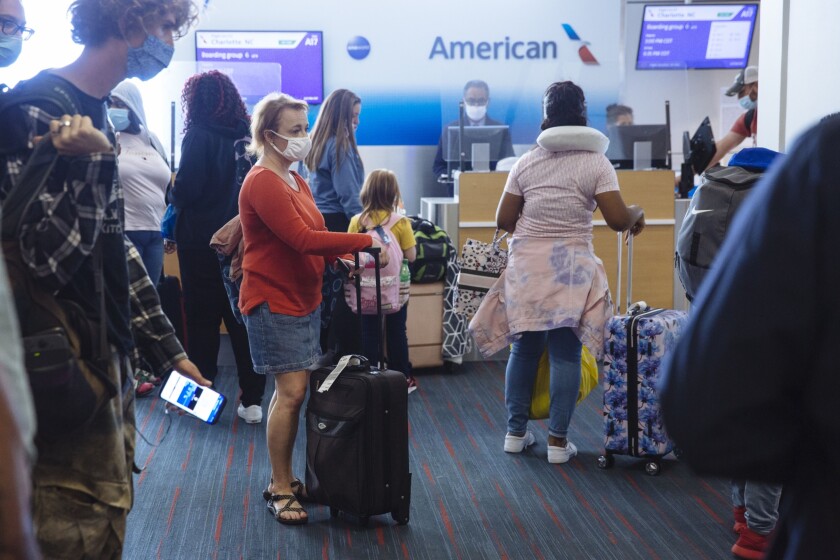Fitch Ratings said Tuesday it has revised the outlooks to stable from negative on 18 large airports and major airline hub facilities and affirmed their ratings.
Fitch said the actions “reflect the diminished operational and financial risks that have challenged airports since early 2020 due to a combination of improving passenger volumes in recent months, the effective management oversight of budgets, and the financial relief accommodated by federal aid that appear to mitigate revenue impairments.”
Last month, Fitch issued a report detailing the revisions to the forward-looking U.S. air traffic assumptions due to the strong rebound in domestic air travel driven by increased U.S. vaccinations and a surge in U.S. leisure air traffic.
Fitch noted travel volumes are expected to see additional growth in the second half of the year and beyond, as business and international travel climbs from pandemic lows.
Bloomberg News
The following airports were affected:
- Atlanta Hartsfield-Jackson Atlanta International Airport AA-minus ratings on both the senior lien airport general revenue bonds and the airport passenger facility charge and subordinate lien general revenue bonds;
- Baltimore/Washington International Thurgood Marshall Airport A-minus rating on its passenger facility charge revenue bonds issued by the Maryland Transportation Authority;
- Broward County Ft. Lauderdale-Hollywood International Airport A-plus rating on its airport system revenue bonds;
- Chicago O’Hare International Airport’s A rating on both the senior lien revenue bonds and passenger facility charge revenue bonds;
- Chicago Midway International Airport A rating on the second-lien revenue bonds;
- Dallas-Ft. Worth International Airport A-plus rating on the joint revenue bonds;
- Denver International Airport AA-minus and A-plus ratings on the senior lien and subordinate lien general airport revenue bonds;
- Hawaii Department of Transportation A-plus and A ratings on the airport system revenue bonds and certificates of participation;
- Houston Airport System A rating on the subordinate lien revenue bonds;
- Los Angeles International Airport AA and AA-minus ratings on the senior lien and subordinate lien revenue bonds, respectively, as well as the A rating to LAX’s related payment obligations;
- Massachusetts Port Authority AA rating on its revenue bonds;
- Miami-Dade County A rating on its aviation revenue bonds
- Minneapolis-St. Paul Metropolitan Airports Commission AA-minus and A-plus ratings on the senior lien and subordinate lien revenue bonds;
- Port of Oakland A-plus and A ratings on the senior lien and intermediate lien revenue bonds and the A underlying bank bond rating for the port’s commercial paper notes;
- San Diego International Airport, AA-minus and A-plus ratings on the senior lien and subordinate lien revenue bonds, respectively, issued by the San Diego Regional Airport Authority;
- San Francisco International Airport A-plus rating on the second series revenue bonds;
- San Jose International Airport A and A-minus ratings on the senior lien airport revenue bonds and underlying subordinate lien bank bonds; and
- Tampa International Airport AA-minus and A-plus ratings on the senior lien and subordinate lien airport revenue bonds, respectively, issued by Hillsborough County Aviation Authority.
Fitch said while the airports will still have risk exposures around traffic and revenue improvement, the progress suggests lessened fiscal strains, with airports better positioned to restore metrics to levels consistent with current rating levels.
